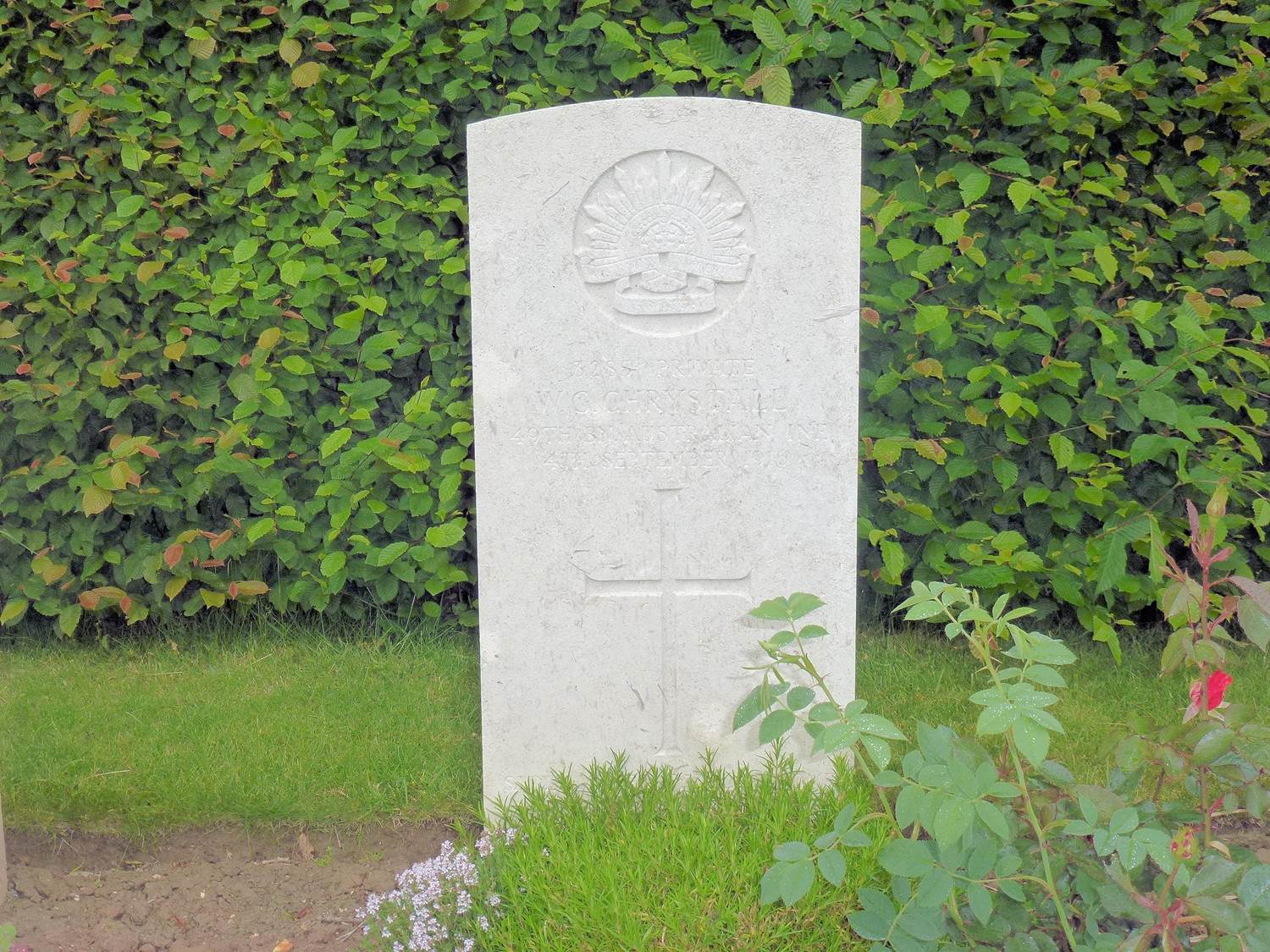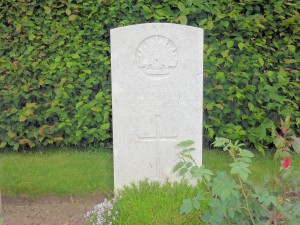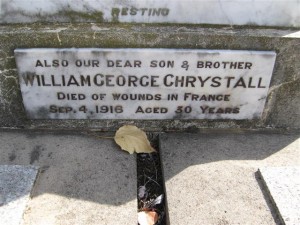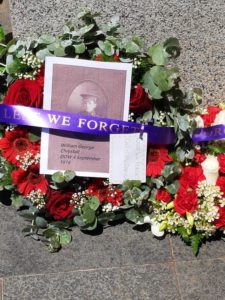William George Chrystall was born in Edinburgh in Scotland, the son of William and Laura Susan Chrystall. The family emigrated to Australia when William was four years old. He was educated at Orange Public School.
After enlistment, he embarked for overseas duties on 21 October 1915 on A48 Seang Bee from Brisbane with the 9th Battalion. William was transferred from the 9th Battalion to the 49th Battalion on 29 February 1916. He was appointed to the 13th Brigade.
On 5 June 1916 William boarded the transport ship Arcadian in Alexandria and arrived in Marseilles on 12 June. On 3 September 1916 while serving with the 49th Battalion he was wounded in the field near Pozieres, sustaining a compound fracture of the left femur.
He died of his wounds the next day while being treated at the 49th Casualty Clearing Station. His mother, Laura, in a letter written 6 June 1922, describes him as being in the Mortar Battery.
There is a commemorative plaque honouring William at Orange Cemetery, Presbyterian Block 2, Grave 65. William is also commemorated on the St. John’s Presbyterian Church Orange Honour Roll and the World War I Roll of Honour on the southern face of the Orange Cenotaph.
On 25 April 1917 the second ever Anzac Day service in Orange was held at the Orange Public School. Mayoress McNeilly placed a laurel wreath on the Union Jack for each fallen soldier who had attended the school, including William Chrystall.
In July 1917 a tree was planted at Orange Public School in William’s memory. It was one of 26 trees planted in honour of fallen soldiers who had attended the school.
In 1923 the Anzac Memorial Avenue of trees was planted along Bathurst Road to commemorate fallen WWI soldiers. A tree was planted in honour of “Pte WG Chrystall”; the tree was donated by ET McNeilly. Very few of the trees are still standing today.
Leader, 6 February 1918, p. 1.
Late Private Chrystall
* Margot Sharpe, 2015




